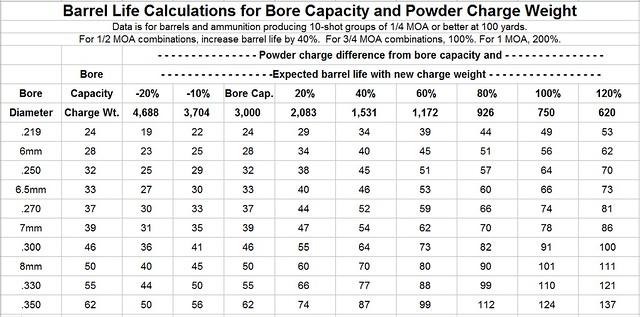Max Heat
Well-Known Member
My calculations for barrel life with a 7mm barrel burning 85 grains of powder is rather short. With bore capacity at 38.5 grains, 85 grains is about 220% overbore. Barrel life will be about 600 to 700 rounds.
I'm OK with that number, if that's what it is. Does stainless fair any better?
Does how far into the throat the bullet is make any difference?
Where does the 220 stand, in terms of percent overbore, compared to the 7RUM?

